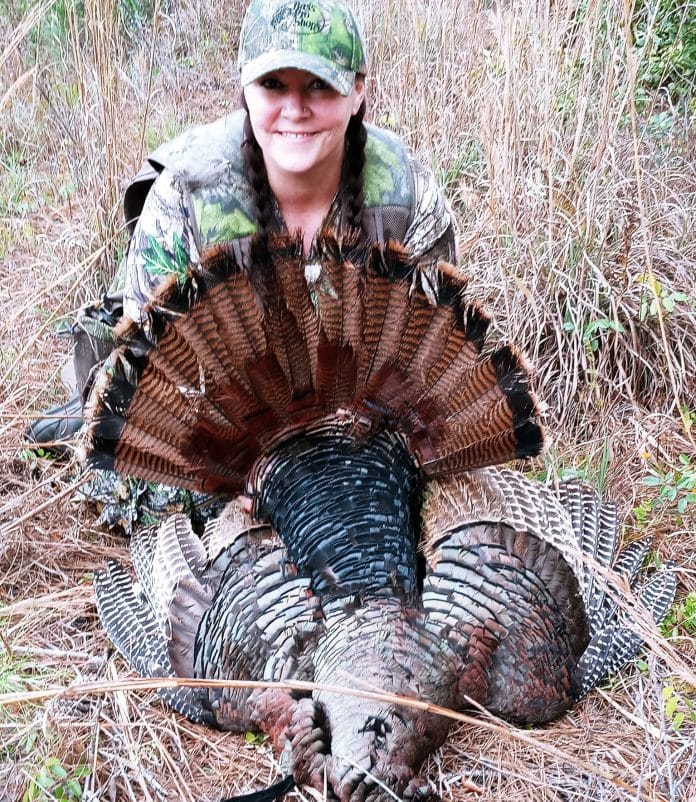For years, hunting buddies have argued over who shot the biggest turkey. “Mine weighs more, so it’s the biggest,” or “Mine’s beard is longer, so it’s the biggest.” Then another will pipe up, “I shot a turkey with two-inch spurs, so mine’s the biggest!” If you really want to know, there are scoring systems like that of the National Wild Turkey Federation, which can answer the question.
There are two subspecies of turkeys in Florida; the Eastern and the Osceola. If you hunt Eastern turkeys, you have a distinct advantage over the Osceola regarding weight. The Eastern is the heaviest of the two and can weigh over 25 pounds whereas Osceola’s rarely exceed 21 pounds.
One part of your score is the weight, so jot down the turkey’s weight in pounds and ounces. Once you have the weight, convert it to decimal form and record it.
There is nothing more gratifying than making a great shot and noticing he is sporting a big set of spurs; Osceola turkeys are known to have the longest spurs. Old school turkey hunters still consider any set of spurs you can hook over a limb and support the weight of the turkey as a trophy set of spurs. The NWTF has a more precise procedure to measure spurs by measuring along the outside center, from the point of the spur just above the scaled leg to the tip of the spur. Add the two measurements together and multiply by 10; these are the points you record for spur length.
Watching a big tom coming in will get your heart racing and if his beard is dragging the ground, then take the shot as soon as you get it. A turkey like that will give you instant bragging rights for the rest of the weekend. If he has two or more beards, you will have bragging rights for the rest of the season!
To correctly measure your beard for official NWTF consideration, measure the beard length from the point where the beard protrudes from the skin to the very end of the beard. Then, multiply by two and convert that to decimal form. If you are lucky enough to harvest a Tom with multiple beards, measure each beard and convert to decimal form. Then, multiply the combined score by two and that is the points for the beard or beards’ score.
Tally your score by adding the weight, spur length and beard length. By comparison, a 20-pound Tom with one-inch spurs and an eight-inch beard will have a combined score of 56, an average mature bird. By NWTF standards, this is a very respectable turkey. If all this math is just too much, you can go to the NWTF.org website and use their calculator. They even have a decimal conversion chart to make the math easier.
As always, I’d love to hear about your own outdoor adventures and maybe see a photo or two of your successes at [email protected]. God Bless and good hunting!

